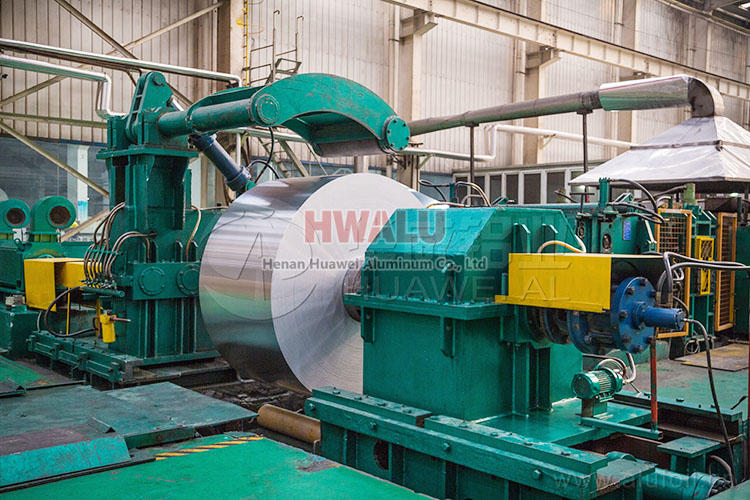Iron and silicon are the main impurities in the 1000 series aluminum. The different content and relative ratio of iron and silicon have a great influence on performance. For example, based on the composition of 1a99 alloy, the iron content is increased from 0.0017% to 1.0%, the elongation of the alloy is reduced from 36% to 14.3%; the silicon content is increased from 0.002% to 0.5%, and the elongation is increased from 36% decreased to 24.5%. For the melting casting process, the relative content of iron and silicon is different, and the tendency of ingot crack formation is also different. In the range of high-purity aluminum, due to the low content of iron and silicon, silicon can be dissolved in the matrix, and the tendency of ingot cracking is small. In the range of industrial pure aluminum, when the total content of iron and silicon is about 0.65% or less, the alloy has a tendency to crack. If w(FE)>W(SI) is controlled within this range, cracks can be prevented. However, when the content of iron and silicon is high and their sum is greater than 0.65%, even if w(SI)>W(FE), cracks will not appear.
The main impurities in the 1 series aluminum alloys are iron and silicon, followed by copper, magnesium, zinc, manganese, chromium, titanium, boron, etc., as well as some rare earth elements. These trace elements are also alloyed in some 1 series aluminum alloys. It has a certain effect on the structure and properties of the alloy.

The specific introduction is as follows:
(1) Iron: Iron and aluminum can form FeAl₃, iron and silicon and aluminum can form ternary compounds α (Al, Fe, Si) and β (Al, Fe, Si), which are the main phases in the 1 series aluminum alloy , Hard and brittle, it has a great influence on the mechanical properties. Generally, the strength is slightly increased, while the plasticity is reduced, and the recrystallization temperature can be increased.
(2) Silicon: Silicon and iron are coexisting elements in aluminum. When silicon is excessive, it exists in the state of free silicon, hard and brittle, so that the strength of the alloy is slightly increased, while the plasticity is reduced, and it has a significant impact on the secondary recrystallized grain size of high-purity aluminum.
(3) Copper: Copper mainly exists in a solid solution state in the 1 series aluminum alloy, which contributes to the strength of the alloy and also affects the recrystallization temperature.
(4) Magnesium: Magnesium can be an additive element in the 1 series aluminum alloy and mainly exists in a solid solution state. Its function is to improve the strength and has a small effect on the recrystallization temperature.
(5) Manganese and chromium: Manganese and chromium can significantly increase the recrystallization temperature, but they have little effect on grain refinement.
(6) Titanium and boron: Titanium and boron are the main metamorphic elements of series 1 aluminum alloys, which can refine the ingot grains, but also increase the recrystallization temperature and refine the grains. However, the influence of titanium on the recrystallization temperature is related to the content of iron and silicon, but when Si contains 0.48% (mass fraction), titanium can significantly increase the recrystallization temperature. The effect of titanium on the recrystallization temperature is related to the content of iron and silicon. The addition of an element and impurities has a great influence on the electrical properties of the 1000 aluminum alloy, which usually leads to a decrease in the electrical properties. Among them, nickel, copper, iron, zinc, and silicon cause a decrease in electrical properties, while vanadium, chromium, manganese, and titanium cause a decrease in electrical properties. The decreasing order of conductivity is Cr, Mn, V, Ti, Mg, Cu, Zn, Si, Fe. In addition, copper and zinc will reduce the corrosion resistance of aluminum, while manganese, silicon and iron will form a brittle phase, which will affect the plasticity of 1000 aluminum alloy.
Addition of elements and impurities has a greater impact on the electrical properties of Series 1 aluminum alloys, and generally reduces the electrical properties. Among them, nickel, copper, iron, zinc, and silicon decrease less, while vanadium, chromium, manganese, and titanium decrease more. In addition, the presence of impurities will destroy the continuity of the oxide film formed on the aluminum surface and reduce the corrosion resistance of aluminum.
